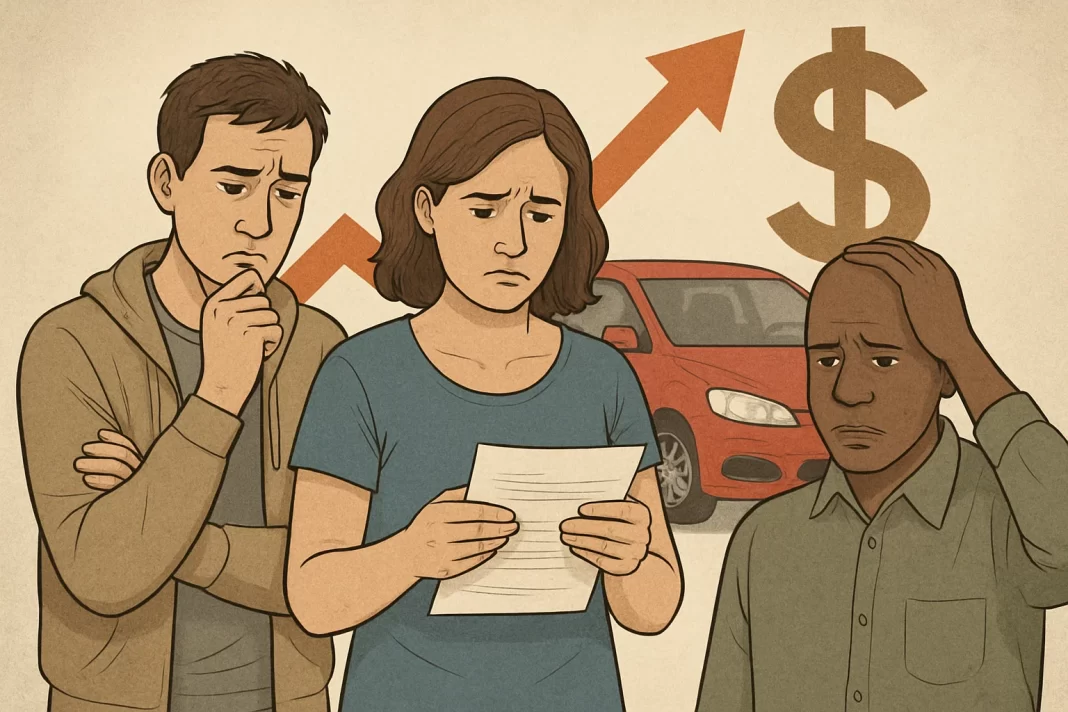Owning a car in the United States has always been a symbol of independence, but in recent years, it has become a heavy financial burden for many. What was once considered a manageable expense has grown into a costly commitment, with Americans now paying far more than they expect to keep their vehicles on the road. From insurance premiums and rising gas prices to unexpected repairs, the true cost of car ownership is more than most drivers anticipate.
The Annual Cost of Owning a Car: Nearly $12,300
In 2024, the average American driver is spending a staggering $12,297 per year on car ownership, according to a report from AAA. That breaks down to about $1,024 a month—a sum that includes everything from fuel and insurance to maintenance and depreciation.
The largest of these expenses is depreciation, with an average driver losing about $4,680 annually as the value of their car declines. If you’re leasing, this loss is especially pronounced, as you’re essentially paying for that depreciation on a yearly basis.
Experts predict that in the near future, as the prices of new cars continue to climb, the total cost of owning a vehicle could rise as high as $15,000 a year—a cost many drivers may find difficult to keep up with.
Breaking Down the Big Costs
-
Depreciation: The value of your car starts to drop the moment you drive it off the lot. On average, a new car loses about 20% of its value in the first year. For example, a $30,000 car could lose as much as $6,000 in just 12 months. Depreciation is a significant cost for car owners, especially for those who lease, as they’re paying for that loss in value every year.
-
Insurance: Car insurance remains a substantial expense for most drivers, with the average American paying around $2,670 annually for full-coverage insurance. Insurance premiums vary by location, age, and driving history, but in high-risk areas or for drivers with poor records, those rates can be even higher.
-
Fuel: Fuel prices continue to fluctuate, but the average American driver still spends between $1,500 and $2,500annually on gasoline. While electric vehicles (EVs) offer a potential solution to rising gas prices, the switch to electric isn’t without its own financial concerns, including the cost of electricity and future battery replacements.
-
Repairs and Maintenance: Keeping your car in working order is another significant cost. Regular maintenance like oil changes, brake repairs, and tire rotations can cost anywhere from $500 to $1,500 per year. And if you face a major repair, such as replacing the transmission or fixing the engine, the bill can quickly run into the thousands.
-
Loan Interest: Many car buyers take out loans to finance their vehicles, which adds another layer of cost. With interest rates ranging from 4% to 6%, a $30,000 car loan could cost you $3,900 in interest over five years, making your car more expensive than its initial price tag suggests.
Location Matters: How Your State Affects Car Ownership Costs
Where you live plays a significant role in the overall cost of owning a car. In states like California and New York, car ownership can be particularly expensive due to high gas prices, steep insurance premiums, and costly parking. On the other hand, drivers in more affordable states like New Hampshire can expect to spend around $4,299 annually—thanks to lower fuel prices, insurance rates, and car costs in general.
In urban areas, where public transportation may be readily available, car ownership might not be as essential, which can reduce overall costs. However, in suburban and rural areas, owning a car is often a necessity, driving up costs for those who have limited alternatives for getting around.
The Hidden Costs of Car Ownership
Beyond the obvious expenses, car ownership comes with several hidden costs that can add up over time. These might include parking tickets, tolls, or parking fees for city dwellers. In areas with limited parking, drivers may also face expensive parking garage fees. Additionally, routine cleaning and detailing, while not a major cost in itself, can accumulate over time.
For families or individuals who frequently transport children or elderly relatives, the costs associated with child safety seats and the wear-and-tear on the vehicle can add another layer of financial strain.
The Case for Electric Vehicles
With rising gas prices, many drivers are looking to electric vehicles (EVs) as a solution to reduce their fuel costs. While EVs have fewer maintenance needs than traditional vehicles and eliminate the need for gasoline, they come with their own set of expenses. The initial purchase price of an EV is typically higher than that of a conventional vehicle, and charging infrastructure can be limited, especially in rural areas.
Moreover, EV owners should keep in mind the cost of replacing the battery—which can run into the thousands of dollars after several years. While the savings on gas are significant, these other costs must be factored into the decision-making process when considering an electric vehicle.
Is Car Ownership Still Worth It?
With car ownership costs rising across the board, many Americans are questioning whether it’s still worth owning a car. For many, a car remains a necessary part of daily life, especially in suburban or rural areas where public transportation options are limited.
However, for those living in cities with robust public transportation systems or alternative mobility options like ridesharing and car-sharing programs, the financial burden of car ownership may not be as justifiable. Public transit and other alternatives can be more cost-effective, particularly when factoring in the total cost of ownership, including maintenance, insurance, and fuel.
In the end, the decision to own a car remains a personal one, but drivers must be prepared for the increasingly steep financial costs. As car prices rise, and expenses like insurance and fuel continue to climb, owning a vehicle in the United States today is far more expensive than it once was. It’s crucial for potential car buyers to consider not just the price of the car itself, but the ongoing costs of keeping it on the road.








